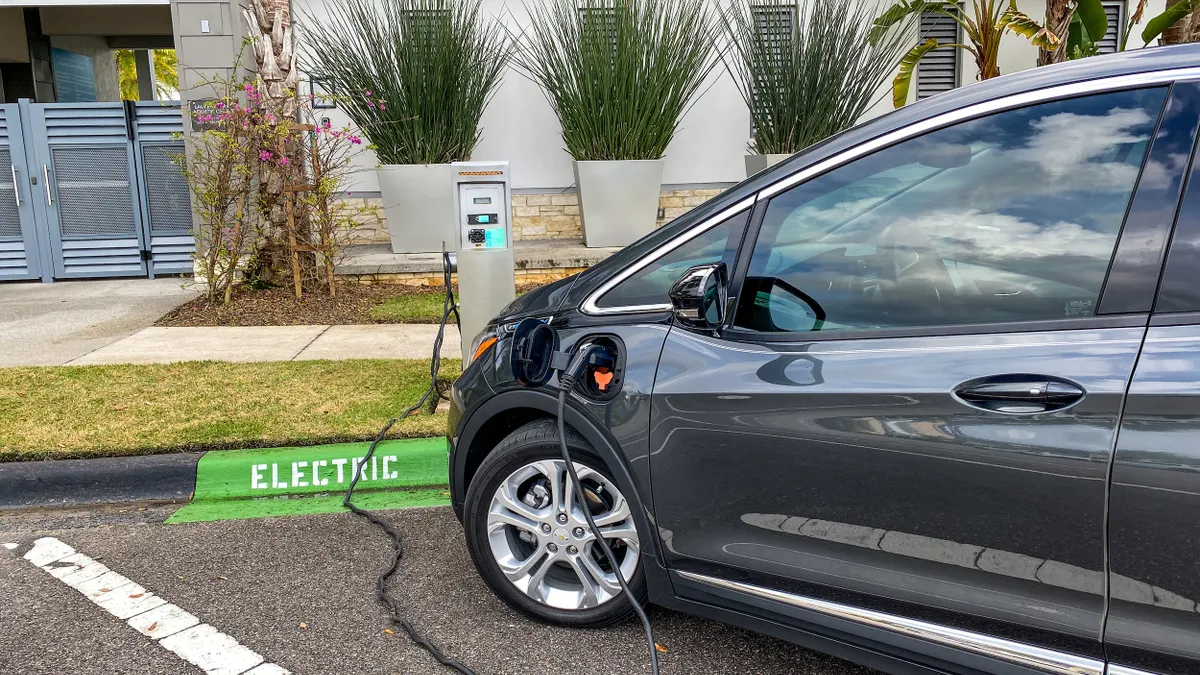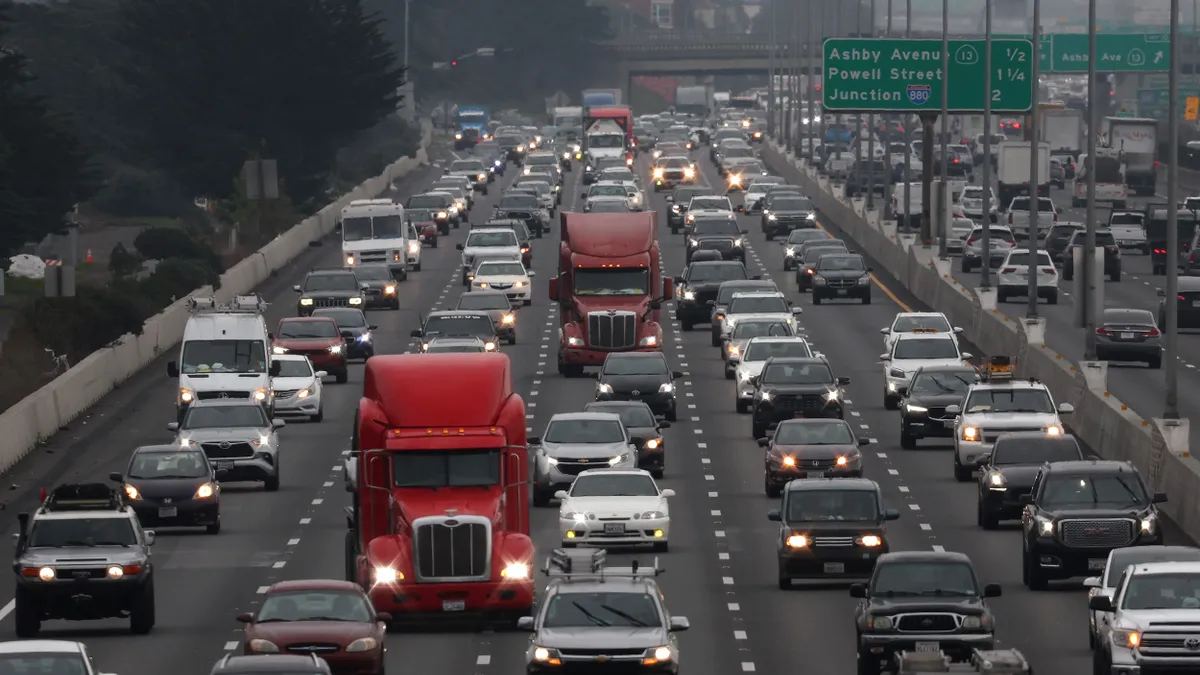During the coronavirus pandemic, as vast numbers of people stopped commuting and other forms of travel, some autonomous vehicle pilots programs found new ways to show the value of the still-nascent technology. Instead of moving people, they pivoted to deliver food and medical supplies.
The Jacksonville Transportation Authority (JTA) in Jacksonville, Florida, partnered with autonomous mobility companies Beep and NAVYA to transport COVID-19 tests using autonomous shuttles. And Columbus, Ohio, used two shuttles that were originally intended for passenger service to transport food and personal protective equipment to low-income residents.
Experts said that while the shuttles hold promise, more work is needed on the technology and on regulations before they can regularly move people. But there is excitement about the future.
"I'm bullish on shuttles, because I think the more we can get people to touch and feel these things, they'll realize that they're safe, and they work," said Eric Tanenblatt, global chair of public policy and regulation at law firm Dentons. "And they're pretty cool and innovative," he said, thus he expects people will be more willing to use AVs when they're in the mainstream.
Autonomous technology still in relative infancy
A report released earlier this month by the Transit Cooperative Research Program at the National Academies of Sciences, Engineering and Medicine found that interest in using autonomous shuttles "continues to expand," especially in public transportation. JTA, for example, is in the midst of procuring around a dozen electric shuttles for use along its Bay Street Innovation Corridor and aims to start passenger service in 2023.
But the report noted that autonomous technology is still developing. AVs are slower than other transport modes, and their radars and sensors are not totally reliable, so they cannot operate safely in all the situations they may encounter and still require a safety driver.
Mandy Bishop, Smart Columbus program manager at the city of Columbus, said while there is great promise for AV passenger service, it cannot be permanent yet due to the technological limitations. She said transit agencies could help move the ball forward by incorporating some autonomous technology onto trains and buses first, including through systems like Positive Train Control, which helps prevent collisions and enhance safety.
The Columbus AV shuttle's lack of speed relative to other modes, as well as its technological limitations, may prevent it from being an attractive option for users at this stage, especially if they want to use it as part of their daily commute. But Bishop said it helped officials understand how to potentially connect residents of a low-income part of the city to transportation options and close a gap.
"Our shuttle operated in the range of five to nine miles an hour, so when you're thinking about closing the first mile-last mile gap, and the readiness of the technology, it needs to come a little bit further," Bishop said. "[We] feel like this pilot was a really good opportunity to contribute to that space and to that information."
Those technological limitations were also on full display during a pilot program in Fairfax County, Virginia, through its public Relay autonomous shuttle. It operates at a maximum speed of 10 mph and launched last October, carrying 12 passengers at a time just under a mile, from a subway station to a nearby development with shopping, entertainment, housing and hotels.
During a June webinar hosted by the Fairfax County Economic Development Authority, officials involved in the project said there is still a long way to go before Relay can be permanent.
"I think the industry did itself a disservice by leading people to believe that autonomous vehicles were going to be driving all over the place in a few years."

Joe Moye
CEO, Beep
Its sensors are not capable of navigating through inclement weather or around vegetation encroaching on the road. Meanwhile, encountering double-parked cars or trucks means a shift into manual mode so the on-board safety driver can navigate around them. And while the shuttle was moving at the 10 mph speed limit, other drivers on the road would speed past it, creating potentially dangerous situations for all road users.
Sarah Husain, a transportation planner at the Fairfax County Department of Transportation, said it was all part of the learning process.
"It's important to note here, though, that these various challenges have come to light because of the real-world environment where we're piloting Relay," she said. "We sought out these challenges through the pilot. Without these kinds of real-world tests, the opportunities would not present themselves."
Husain said challenges include the need to make sensor adjustments and software upgrades that take Relay off the road temporarily, even with the pilot still ongoing.
The hype surrounding AVs, which various companies have stoked with promises of robotaxi networks and widespread deployment, has in some cases given way to the reality of their current capabilities. Joe Moye, CEO of autonomous shuttle company Beep, said the transition to full autonomy will likely be slower than originally intended.
"I think the industry did itself a disservice by leading people to believe that autonomous vehicles were going to be driving all over the place in a few years, anywhere, anytime, any speed, picking you up in your driveway and taking you where you want to go," Moye said.
Repeated calls for national regulations
Also standing in the way of further deployment is the lack of a national regulatory framework for AVs, a deficiency that some say will lead to the United States falling behind other countries, including China.
Congress has debated a federal AV law for several years, but it has not gotten over the finish line, partly due to disagreements over safety and liability protections. In the meantime, it has been up to states and cities to regulate the technology, although Tanenblatt noted the unprecedented nature of AVs makes them difficult to regulate.
"One of the biggest challenges for AVs is that historically in the United States, the federal government has regulated the vehicle, and the state governments have regulated the driver," he said. "In the case of AVs, the vehicle is the driver. So we're in somewhat uncharted territory."
Currently, some states allow autonomous shuttles on public streets, while others restrict them to testing in closed environments. Tanenblatt said that in addition to directly regulating AVs, local leaders should change some of their zoning rules to consider drop-off and pick-up zones, parking requirements and other factors that impact their use.
Automakers have previously called for the National Highway Traffic Safety Administration (NHTSA) to allow more new vehicles that do not conform to all Federal Motor Vehicle Safety Standards (FMVSS) to be tested on public roads.
NHTSA currently allows each manufacturer to test 2,500 nonconforming vehicles on public roads regardless of technology. Rob Grant, senior vice president of government affairs and social impact at Cruise, a self-driving car company owned by General Motors, said raising the cap to 80,000 vehicles a year would be "sufficient" to cover AV testing needs.
"It's straightforward, it's simple, it doesn't cost the government a single dollar," Grant said about raising the exemption cap during a May webinar hosted by the Center for Strategic and International Studies (CSIS).
In 2019, Nuro and General Motors petitioned NHTSA for temporary exemptions from the cap to test their AVs, and currently others must do the same. NHTSA granted Nuro its exemption, but it has not issued a decision on General Motors.
James Lewis, director of the technology and public policy program at CSIS, said during the webinar that congressional inaction must end.
"It would be nice if the Congress would actually pass some of these bills," he said.




















